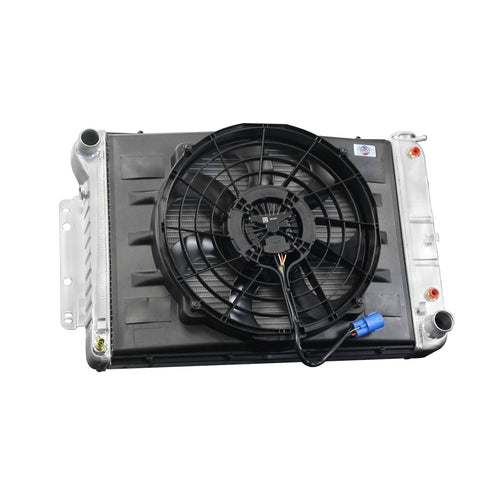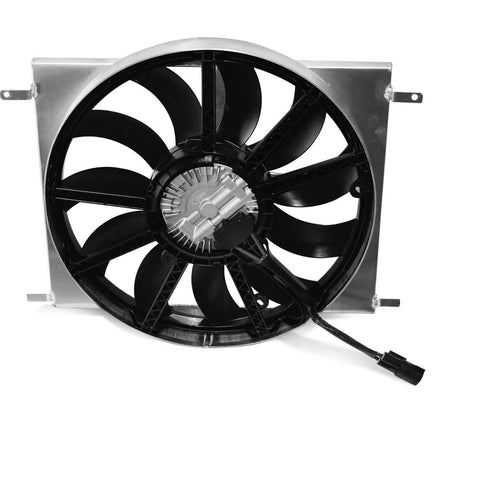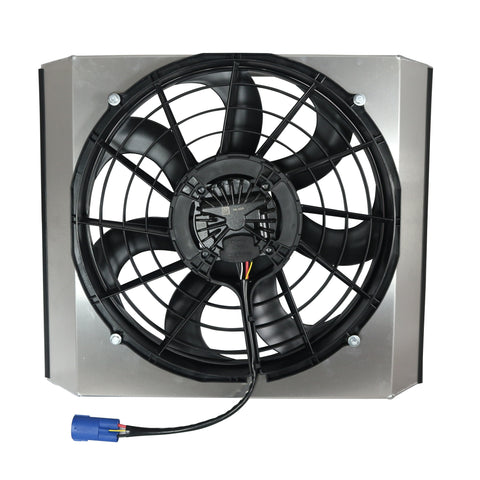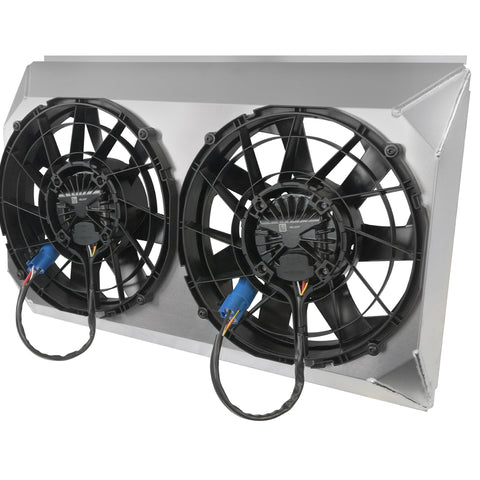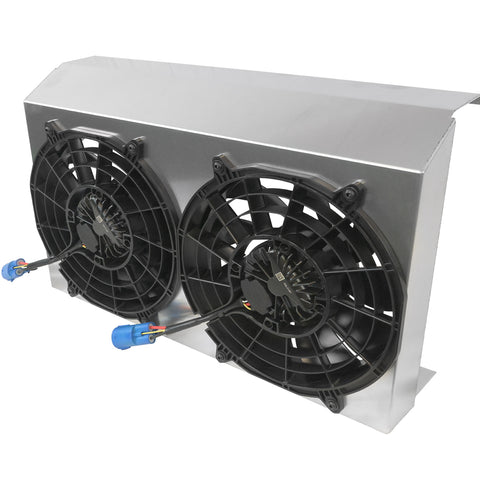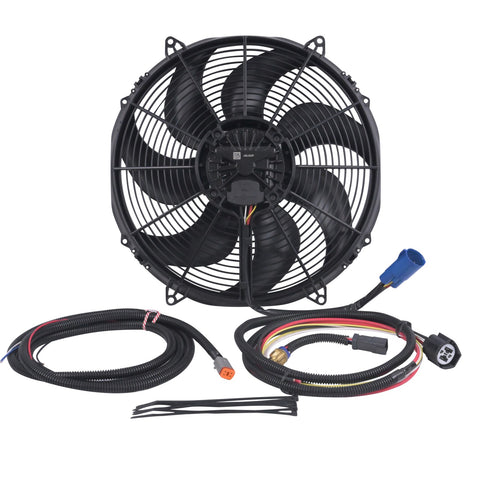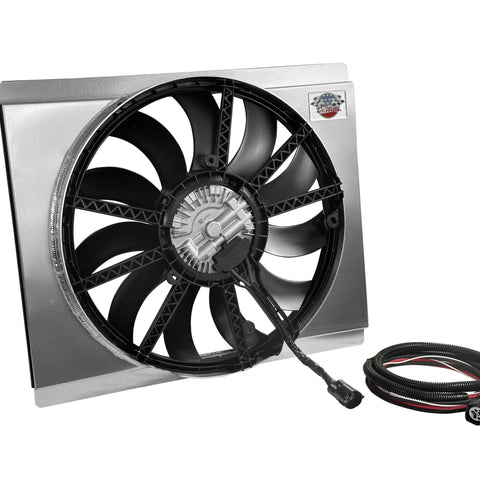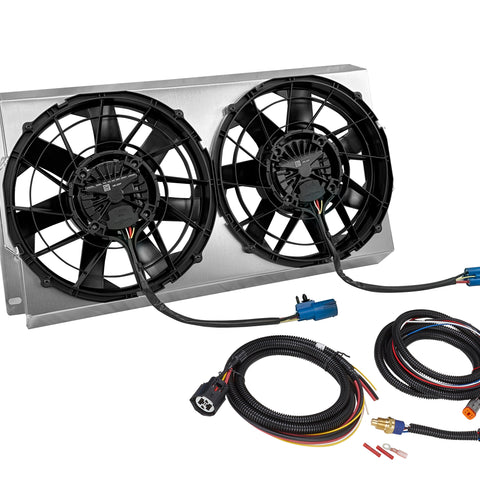The tides are changing in the sea of aftermarket fans. Where brushed motor fans have historically been the only option for cooling your project vehicle, a major upgrade is now available. The power of brushless motor fans is being used in many new vehicles and are the choice of the leading OEM's. Why? Efficiency, durability, and higher performance to name a few reasons. Although these advantages come with an elevated price, it's offset by the massive benefits and a peace of mind while in traffic on a summer day.
With every build, space is a limiting factor. The cooling system design is often considered after the engine bay is consumed by the desired engine package and components. The area remaining between the core support and the front of the engine must accommodate an appropriately sized radiator, and fan(s), to adequately cool the engine in all conditions. Generally, after the radiator is placed, the sliver of room behind it is left to cram in a fan - seeking a high CFM rating and slim mount depth as possible. Before starting that search, let's review some general rules on how to select the correct fan for your application:
Make sure...
- The fan(s) cover 75% of the core surface
- A shroud is used to mount the fan(s) and provide as much air gap allowable between the face of the fan and the radiator core
- Fans mounted directly to the core face put added stress on the cooling tubes and limit fan performance
- Surface mounted fans also don't draw air through all areas of the core
Don't use...
- The CFM rating as a reliable data point - this isn't a reliable method of comparing two fans
- The CFM (cubic feet per minute) rating is a zero-pressure measurement which ignores the effect of aifacr resistance while in motion
Look for...
- The wattage and amp draw of the motor(s), as well as the blade design
- Fans that draw more power, and produce the most pressure, make greater motor torque and move more air through more restrictions
Brushed DC motors depend on a mechanical system to transfer current, while brushless DC motors use an electronic mechanism to control current. This translates to greater power and efficiency by less radiated emissions, no sparking interface, and no mechanical contact for commutation on the rotor.
Advantages of brushless fans:
- Variable speed - precise control of the power consumption that matches the thermal profile for the vehicle
- Minimum speed @ 175 degrees, Maximum at 195 degrees
- Four ranges available from 140 to 215 degrees
- Sensed by temperature switch in inlet hose
- Far less noise
- Flush slim fit
- More consistent laminar flow
- Greater vibration resistance
- 40,000 hour life rating vs. 8,500 hours on a similar brushed version
- Steady RPM at 2800 and will not fluctuate during static pressure changes
- Brushed will vary several hundred RPM - this is why you can't use CFM as a determining factor
How do brushless fans achieve this...
- No relays and less failure points
- Fans always soft start at 1 amp with a controlled ramp up to ~33 amps (depending on fan design)
- No dimming of interior lights during inrush or wear of electrical components
- Driven directly by most aftermarket ECUs with negative type PWM outputs
- Better motor sealing
The challenges...
- Wiring and voltage are much more critical
- Battery in the trunk?
- Reaction speed, off to full speed may take up to 20 seconds
- Motor protections, the motor always protects itself from obstruction and electrical variance
- Requires a shroud with drop in mounting
Brushless fans are now available in various diameters and power profiles to meet your space and performance requirements. Universal mounting shrouds are also accessible to complete the fit and finish of a brushless fan. This technology is here to stay and will enhance every vehicle in which it is placed. The power of brushless is hard to ignore as the benefits and ease of installation provide protection against any climate or driving style.



